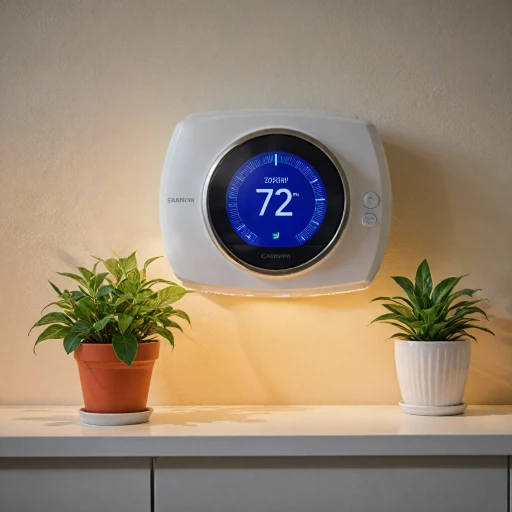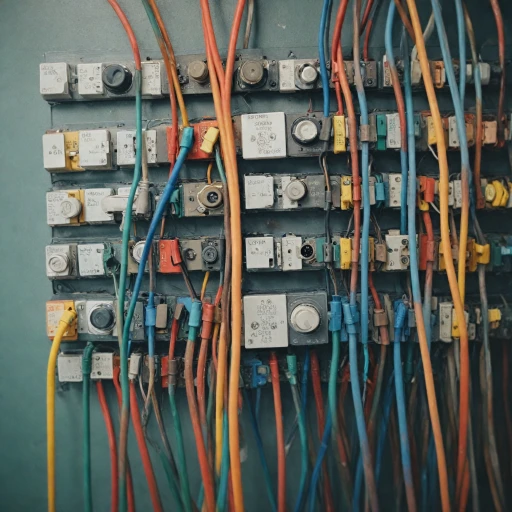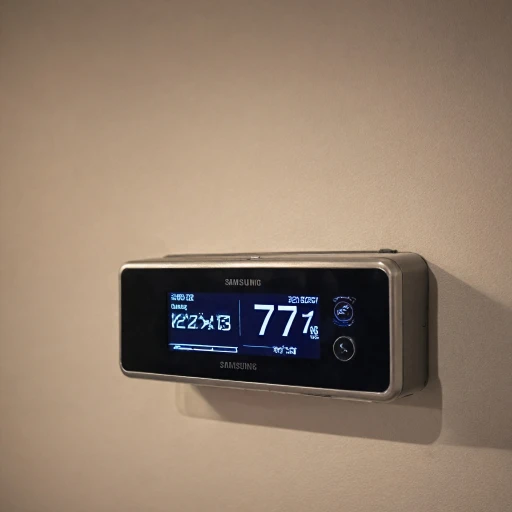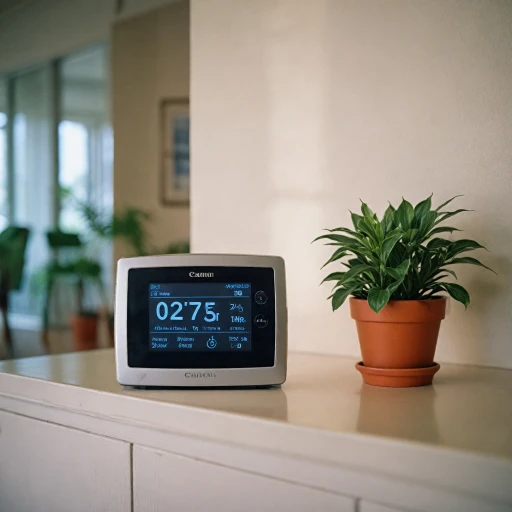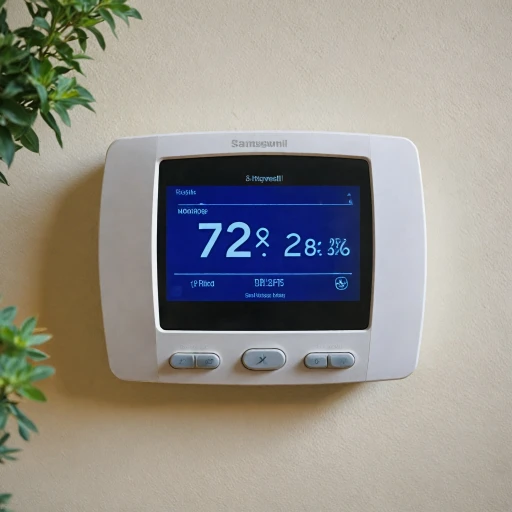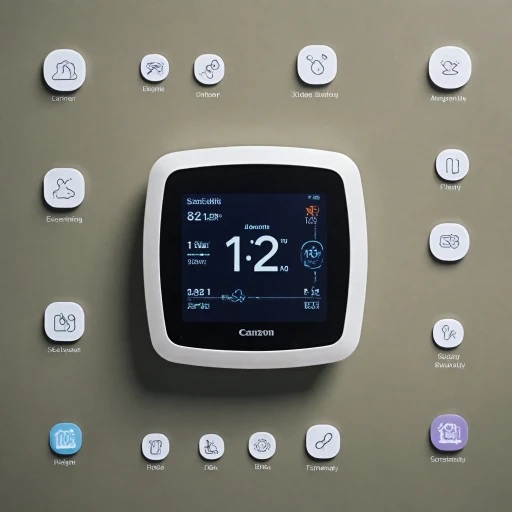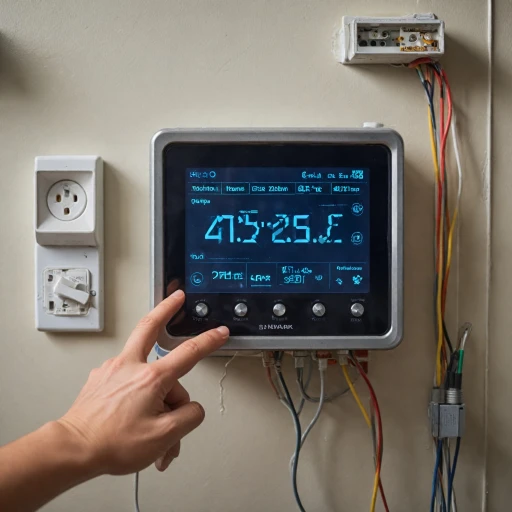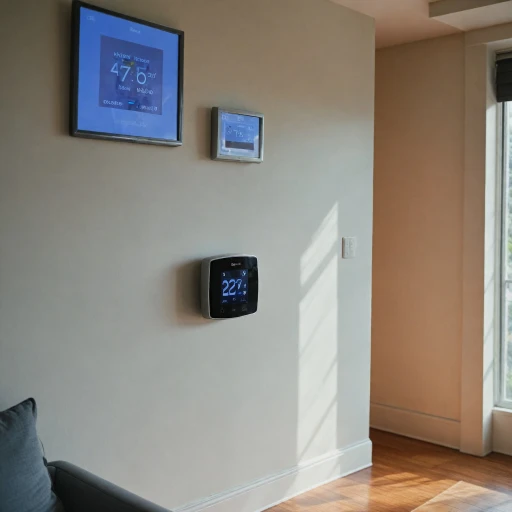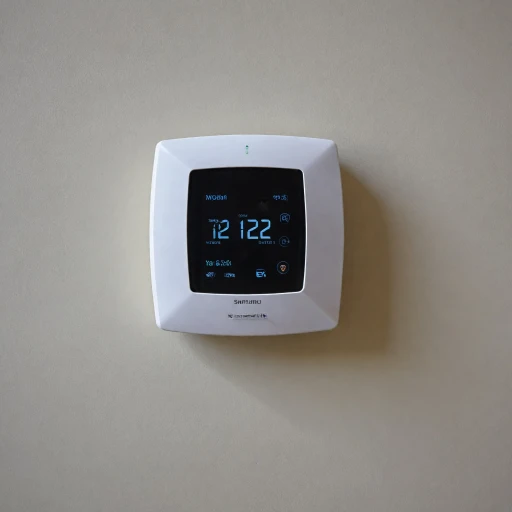
Understanding Smart Thermostats
Exploring the World of Smart Thermostats
Smart thermostats are revolutionizing the way we manage our home climate, providing more control, efficiency, and convenience. With features like remote access, learning abilities, and integration with other smart home devices, these state-of-the-art systems are an integral part of modern HVAC management. Understanding how they work and their benefits can help you maximize energy savings, especially during your winter vacation.- Automation and Control: One of the primary benefits of smart thermostats is their ability to automate temperature settings. You can set thermostat schedules and adjust the temperature leave settings from anywhere, using your smartphone or other devices. This ensures that your home’s HVAC system is only heating or cooling when it needs to, leading to significant energy savings.
- Learning Capabilities: Many smart thermostats learn your schedule and preferences, adjusting the temperature accordingly. This type of intuitive technology can prevent unnecessary heating when you're on vacation or sleeping, keeping your energy bills lower.
- Energy Monitoring: Real-time energy usage statistics are another advantage of smart thermostats. By providing insights into when and where energy is used, they can guide you to make more informed adjustments to your thermostat settings to further enhance efficiency and save money when you're away.
- Remote Sensors: These devices often work with remote sensors, which can help optimize temperatures in different areas of your house, ensuring that your heating system is running efficiently and maintaining comfort where it's needed most. Delve deeper into these capabilities by visiting enhancing home comfort with thermostats and remote sensors.
Why Adjusting Thermostat Settings Matters
Importance of Adjusting Your Thermostat Settings
When planning a winter vacation, adjusting your thermostat settings is crucial for both energy savings and maintaining the safety of your home. Leaving your thermostat at its usual setting while you're away can lead to unnecessary energy consumption and increased heating costs. By optimizing your thermostat settings, you can save money and ensure your home remains protected from the harsh winter conditions.
During winter, the HVAC system plays a vital role in maintaining the right temperature in your house. Setting the thermostat to a lower temperature when you're not home can significantly reduce energy usage. This not only helps in saving energy but also reduces the strain on your heating system, potentially extending its lifespan.
It's important to consider what temperature to leave your thermostat at during your absence. A common recommendation is to set the thermostat degrees to around 50-60°F (10-15°C) to prevent the pipes from freezing while still conserving energy. This setting ensures that the heating system will kick in only when necessary, keeping your home safe and energy-efficient.
For those using a smart thermostat, the benefits are even more pronounced. These devices allow for remote adjustments, meaning you can change the thermostat setting from anywhere, ensuring optimal energy savings and home safety. Additionally, smart thermostats can learn your preferences and adjust the heating and cooling automatically, providing a seamless experience.
To further enhance your home's comfort and efficiency, consider integrating a humidity thermostat controller. This can help maintain the ideal indoor environment, even when you're not around.
Recommended Temperature Settings for Winter Vacations
Efficient Temperature Settings for Winter Breaks
When planning a winter vacation, determining the right temperature for your home can be a challenge. However, a smart thermostat can help achieve the ideal balance between energy savings and protecting your home from potential cold damage. Start by setting your thermostat to a temperature that minimizes heating costs while also preventing your home from becoming too cold. The ideal temperature setting when you are on vacation during the winter months is usually around 55 degrees Fahrenheit. This setting is typically warm enough to prevent your pipes from freezing, which is a common concern in colder climates. Moreover, if you adapt the thermostat degrees appropriately when you're away from home, you'll avoid excessive wear and stress on your HVAC system. Maintaining a moderate temperature helps ensure your heating system is not working harder than needed, promoting energy savings and longevity for your equipment. Adjusting the thermostat when you're not at home also impacts heating and cooling efficiency, translating into energy and cost savings. By allowing the temperature to drop, you'll save money on heating costs without compromising safety or the condition of your home. If you encounter issues with your smart thermostat settings while away, troubleshooting common problems can prevent disruption in maintaining the optimum temperature. For more insights, consider visiting this troubleshooting guide that can be very helpful to address common smart thermostat power issues.Energy-Saving Tips with Smart Thermostats
Boosting Efficiency with Smart Thermostat Setups
Investing in a smart thermostat is a strategic move for those looking to enhance their home's energy efficiency, especially during a winter vacation. These advanced gadgets allow you to set the thermostat to the optimal temperature that balances comfort and cost-saving benefits when you're away.
- Automatic Adjustments: By using a smart thermostat, you can set the device to automatically lower the temperature to what you prefer when the house is unoccupied. This means the heating system will consume less energy, contributing to substantial energy savings.
- Remote Access: Many smart thermostats come equipped with remote access capabilities. This feature allows you to adjust the thermostat settings while you're away, ensuring your home is heated efficiently without wastage.
- Energy-Saving Schedules: Programming your thermostat with energy-saving schedules can help maintain a balance between comfort and cost. For example, lowering the temperature by a few degrees can help prevent unnecessary use of the HVAC system.
- Integration with Other Systems: Some smart thermostats can also connect with other smart devices to enhance overall efficiency. For instance, integrating with a smart air conditioning system can further optimize your home's climate control.
By leveraging the innovative features of smart thermostats, such as setting specific degrees and utilizing remote monitoring, you can ensure your winter vacation is worry-free and cost-effective. Whether it's about when and what temperature to set the thermostat, or ensuring your pipes won't freeze by keeping a minimum heat, these advanced setups provide the necessary solutions.
Safety Considerations for Winter Thermostat Settings
Consider the Risks to Your Home's Pipes
When you’re setting your thermostat for a winter vacation, one critical consideration is the risk to your home's pipes. Leaving your thermostat at a too low temperature can cause pipes to freeze and burst, leading to disastrous consequences and costly repairs. The HVAC system plays a significant role in maintaining the right temperature to prevent such incidents.Prevent Mold and Moisture Issues
In winter, keeping the indoor air at the right temperature is essential to avoid moisture buildup and mold growth. Smart thermostats can help regulate indoor climate by adjusting the temperature based on your set parameters. Ensuring that the thermostat settings are optimal will keep the house sufficiently warm to prevent excess moisture, which can lead to mold issues.Ensure Safety with Thermostat Features
Many smart thermostats come equipped with safety features that are particularly useful when you're away. Features like remote monitoring allow you to check the status of your heating system and adjust it if needed. This ensures that the house remains at a safe temperature without wasting energy unnecessarily.Protect Your Home from Energy Surges
Another aspect to consider is the status of your HVAC system during power interruptions. Smart thermostats often have backup systems to maintain your settings and protect your home from energy surges when power is restored. This feature not only provides peace of mind but ensures energy efficiency even during unexpected situations.Key Takeaway: Mindful Thermostat Management
Leaving your thermostat at an appropriate setting when you leave for a winter vacation safeguards your home and conserves energy. Consider setting thermostat degrees based on expert recommendations and leveraging technology's full potential to manage your home's climate effectively and safely.Leveraging Smart Thermostat Technology
Maximize Smart Thermostat Capabilities
Harnessing the full potential of smart thermostats can be the key to maintaining optimal comfort and security during your winter vacation. These modern devices not only allow for precise control over your home's temperature but also offer several advanced features that ensure your house remains energy efficient even when you're away.- Remote Access and Control: One of the standout features of a smart thermostat is its ability to adjust settings remotely. By using a smartphone app, you can monitor and modify thermostat settings from anywhere. This capability is particularly useful if you need to make last-minute changes to your energy-saving strategy or react to unexpected weather changes without being physically present in your home.
- Intelligent Schedules: Take advantage of the scheduling features offered by your smart thermostat. Configure your system to maintain a lower temperature when you're away and gradually increase warmth shortly before your return. This feature not only maximizes energy savings but also ensures you are greeted by a cozy home environment.
- Energy Consumption Insights: Smart thermostats provide comprehensive data on energy usage, allowing you to analyze your consumption patterns over time. By understanding these insights, you can make informed decisions to further optimize your heating system's efficiency.
- Integrations with Other Smart Devices: Many smart thermostats can connect with other smart devices within your home, such as security systems and smart locks. By creating an integrated smart home system, you can enhance both safety and energy efficiency during your winter vacation.

